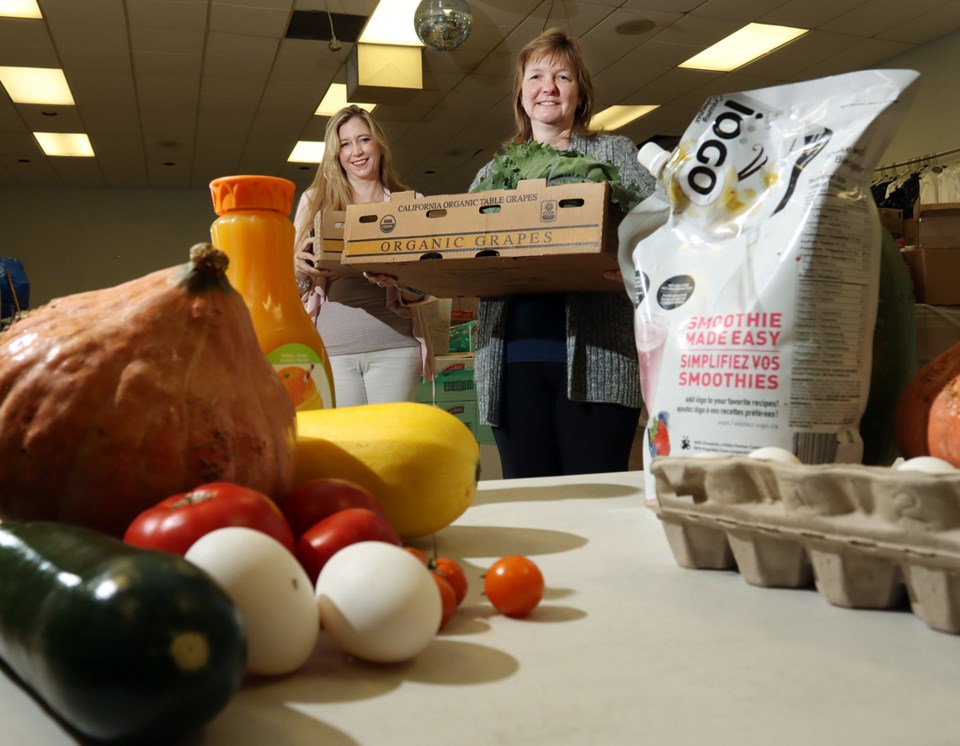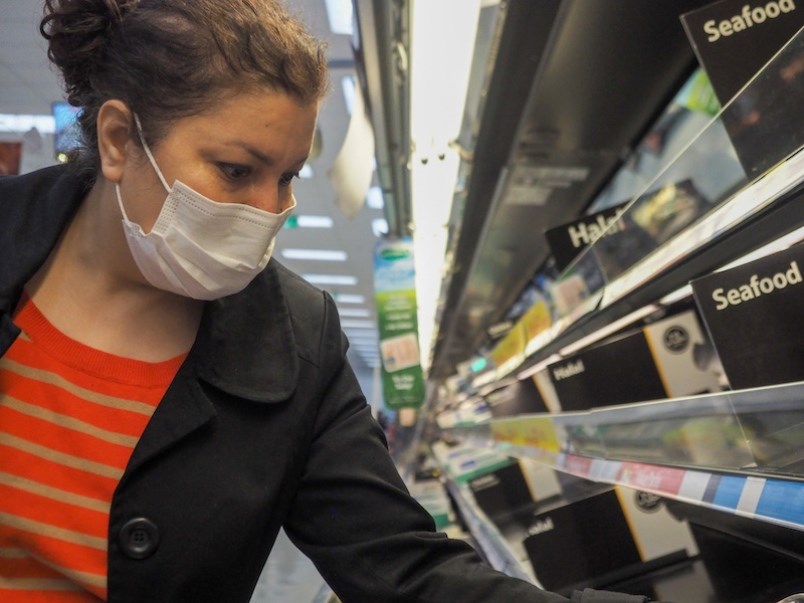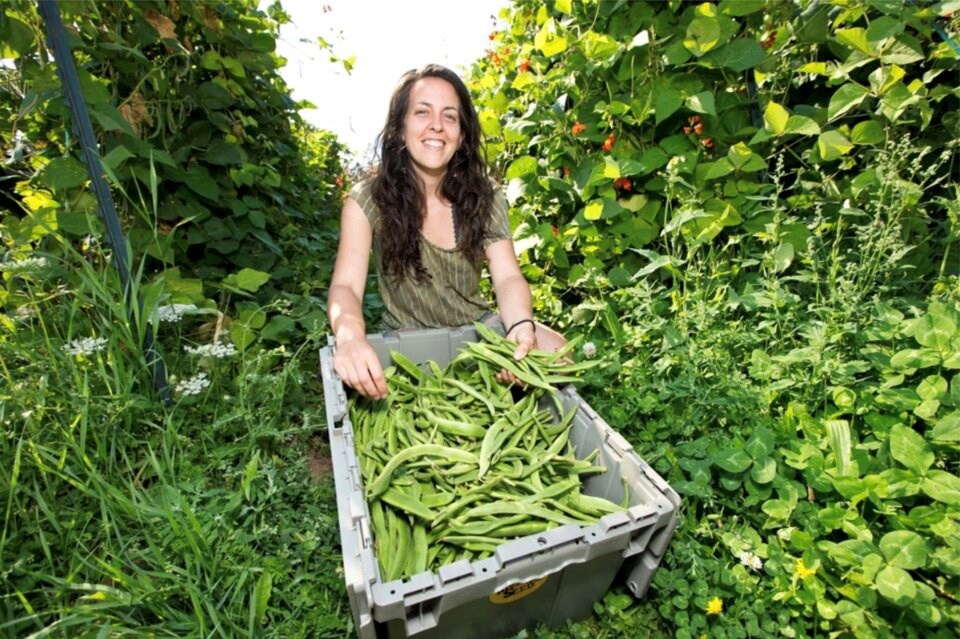They were meant to be temporary, a quick fix for people who had fallen on hard times after the 1981 economic recession.
But by Christmas 1986, B.C. was home to upwards of 50 food banks, more than any other province. Even then, the head of the Greater Vancouver Food Bank (GVFB) — the province's largest — was fighting to avoid becoming a permanent institution.
"We never imagined that we'd be doing this much or that it would go on this long," Sylvia Russell, then executive director of the GVFB, told The Montreal Gazette in 1985. "It was to be a temporary thing. Now we're headed for our fourth winter."
A year later, Russell told The Windsor Star she thought the provincial government "would revise its thinking, with the recession starting, about the need for public assistance.”
What had started in December 1982 as “an idea and six cans of leftover soup” had already evolved into a moral dilemma — feed desperate people now and risk upholding a broken system, or stand by and do nothing.
Four decades later, food banks have only grown, proliferating as an estimated 5.8 million Canadians face food shortages.
“We’ve never seen it like this,” said Cynthia Boulter, the current chief operating officer for the GVFB.
Figures collected by Food Banks Canada in March 2022 showed the number of visits to B.C.'s food banks had already risen 25 per cent over the previous year, higher than Canada's national average of 15 per cent.
Between the summers of 2021 and 2022, the GVFB handed out more than 3.6 million kilograms of food, the most on record for a single year. And since then, things have only been ramping up.
In the lead-up to Christmas, Boulter said the number of people visiting food banks for the first time skyrocketed. Data obtained from GVFB shows new client visits climbed to nearly a thousand in November alone. That’s 43 per cent higher than the monthly average from the previous fiscal year and the busiest month on record.
The demand for food banks comes as grocery prices continue to climb and Canadians face yet another cost-of-living crisis. Even as the cost of gas dipped last month, inflation is driving up the price of food at record levels. Over the past year, edible fats and oils had climbed 26 per cent, while coffee, tea and cereal products had jumped almost 17 per cent, according to the latest numbers from .
To reach people, Boulter says the organization will be working with over 140 community groups by early 2023, providing food as well as fridge and freezer capacity so they can serve hungry people across the metro region and beyond.
But while some people might get temporary relief from such programs, many say the model is failing.
Data shows food banks not fixing chronic hunger
Long-term data on how many people are going hungry in Canada is patchy at best.
That’s because Statistics Canada has only been measuring food insecurity since 2005. Before that, food bank usage was the main way the country kept tabs on hunger.
has shown most hungry Canadians never use food banks, even as a last resort. By 2016, roughly 100,000 people accessed food banks in B.C. out of over 500,000 people who lived in food-insecure households.
“There's 100 different reasons” people avoid food banks, says Jennifer Black, a University of British Columbia professor who has spent years investigating the institution’s rise in Canada.
“Most people will do almost anything to not have to go. They'll borrow money from friends. They'll sacrifice things. They'll sell things. They’ll go into debt.”
The data shows some interesting patterns for those who use food banks.
Analyzing 25 years of , Black found that between 1992 and 2017, at least 116,963 individuals made over two million visits to the GVFB. Episodic and chronic users made up only nine per cent of the food bank population, but they accounted for 65 per cent of all food bank visits.
Her conclusion: “a substantial proportion of food bank resources are providing ongoing food supports beyond what can be considered an acute or emergency context.”
“It's like if you went to the emergency room, and you said, ‘I broke my leg,’ and they're like, ‘Here's a Band-aid,” she told Glacier Media.

In recent years, food banks like the GVFB have worked hard to reduce the stigma around accessing their services while trying to double as an outlet for food deemed unsellable by grocery stores. Food banks have also been among the leading voices calling for an overhaul of government social safety nets.
Even though an estimated 80 per cent of hungry Canadians don't access a food bank, much of the language food banks use to appeal to donors pivots around the idea that donations will tackle hunger, says Valerie Tarasuk, a professor at the University of Toronto’s Department of Nutritional Sciences, and head of PROOF, a research group investigating food insecurity in Canada.
“That is a myth,” Tarasuk said. “There isn't anything that I think anybody can document that says that [food banks] tackle this problem. The fact that we're 40-plus years in, and the problem is bigger than it's ever been.”
Hunger can’t be seen in isolation
Part of the myth around food banks, says Tarasuk, is seeing hunger as an isolated problem. In reality, families cut back on food to afford to keep the heat on, fill their prescriptions or pay rent.
In B.C., 70 per cent of people who accessed a food bank last fiscal year were renters, and according to , the province's rent prices increased by 7.2 per cent over the past year, the most in the country after Prince Edward Island.
“We talked about this as if it's a food problem, and the solution is food,” said Tarasuk. “But food is just part of the household budget. It's it doesn't get managed in isolation. And for that very reason, it can't be resolved in isolation.”
Not getting enough to eat echoes across every part of life. A healthy brain uses roughly 20 per cent of the body's energy. A student who can't feed that brain will starve it, leading to everything from depression and anxiety to withdrawal and behavioural problems, research has shown.
That's a problem at places like the University of British Columbia, where a student food bank in April a nearly 500 per cent increase in visits between 2020 and 2022.
A third of people who accessed food banks in Canada last year were children. For them, hunger can set them up for a lifetime of challenges. One tracking nearly 15,500 Canadian children over 16 years found hunger was independently predictive of teenagers dropping out of high school. Repeated reports of child hunger over time were predictive of early childbearing.
People's physical health can also be put at risk. Not having enough food has been linked to higher rates of emergency room visits due to accidents, self-harm and violence. Falls on stairs, poisoning and overexertion were also found to be more likely among the food insecure, according to a 2021 Canadian .
Pandemic reveals another path
In upending life as we knew it, the COVID-19 pandemic — and governments' responses to it — offered a window into how public policy appears to have had some quietly profound effects on hunger in Canada.
Data from the GVFB shows the distribution of food during the first six months of the pandemic plummeted. Experts say the same thing happened at food banks across the country. Part of it was due to people avoiding crowds. But a bigger reason people stayed away, Boulter and Tarasuk said, was because people received pandemic financial support through programs like the Canada Emergency Response Benefit, or CERB.

When government pandemic benefits ended, the demand for food banks came rushing back. And as inflation spiralled, the problem only got worse, said Boulter. Between 2019 and 2022, visits to food banks have climbed by 35 per cent across the country, according to Food Banks Canada.
By October 2022, one reported that more than half of British Columbians said it's getting harder to feed themselves.
“We experienced a dip in attendance before things ramped up again,” Boulter said.
Many food banks have been leading advocates pushing governments to enact policies that would spell their extinction. But Boulter's experience through the pandemic left her with first-hand evidence — the problem wasn’t a lack of food, she said, but the failure of a government safety net to protect the country’s most vulnerable.
Many economists blame broad public spending as one of the drivers of the current inflation crisis. Still, agreed Boulter and four experts interviewed for this story, providing a permanent basic income would largely eliminate the need for food banks.
“If that happened, we might all be out of jobs. But we’d be happy,” Boulter said.

Small spending boosts shown to reduce hunger
A universal basic income is not the only tool governments have to reduce hunger in Canada.
The PROOF research group has found that broad increases in minimum wage, increasing income through welfare programs and lowering income tax rates for their poorest citizens were among the provincial governments have for reducing hunger.
At the federal level, public old-age pensions have shown an income floor halves the risk of food insecurity once low-income single adults become eligible at 65 years old. The Canada Child Benefit, meanwhile, has been shown to drop the prevalence of severe food insecurity by a third. Bolster those basic social services, and rising hunger rates could be halted and perhaps reversed, research has shown.
“We could just start with those on social assistance, those with children and those on senior assistance,” said Will Valley, a UBC associate professor and academic director of the school's Land, Food, & Community program.
“In food systems, there are no silver bullets. But this one is pretty close.”
Despite the data showing food banks are not serving most Canadians facing hunger, governments continue to give money to such organizations.
A 2021 charitable tax return from showed governments provided $3.12 million to the organization, nearly 20 per cent of its revenue. At $36 million, almost 39 per cent of total revenue came from government sources, tax returns show.
Breaking the myth
Five days before Christmas this year, Prime Minister Justin Trudeau visited a food bank in Montreal, writing on , “they’re making a real difference.”
Politicians visiting food banks during the holidays and holding them up as a solution is nothing new. By relying on corporate and individual donations, food banks have come to hold “a lot of power in our collected imaginations,” said Valley.
Part of that power comes from deep religious and humanitarian imperatives to feed hungry people, something that tends to peak around the holiday season in countries like Canada, says Graham Riches, a professor emeritus of social work at UBC, who has written several books on food banks.
“Canadians are a compassionate, caring group,” added Tarabuk. “But the problem is that it's completely misplaced… it doesn't change the problem, and the problem is big.”
Riches says events like CBC Vancouver’s annual food bank donation drive, which raised nearly $3 million in 2021 and almost $2.6 million so far this year, have also helped normalize food banks.
“[CBC] is public media. When it endorses food banks in the way that it does, it actually feeds into this whole argument that if you give to food banks, you're going to be solving world hunger when there's no evidence to support this at all,” said Riches.
“In fact, it just maintains a very unequal system of social welfare.”

But by putting so much effort into raising money for food banks, critics say they have offered governments political cover to ignore the real problem affecting many long-term clients — persistent poverty.
“What’s evident and clear is we’ve painted ourselves into a corner,” Valley said.
However, Boulter pushed back against claims that food banks are acting as a crutch for government inaction. Until governments can figure out a better solution, she said their clients tell them food banks provide a vital lifeline to get through hard times.
The GVFB does not allow the press to interview its clients, but its data suggests many use the food bank as a stop-gap during tough transition periods. Last fiscal year, 29 per cent of GVFB users had relocated internationally, and 18 per cent were experiencing student poverty.
A breaking point?
As demand has increased, the GVFB has faced shortages in volunteers and storage space. Boulter says its leadership is starting to discuss how much further it can expand before it reaches a breaking point.
At the same time, she says the province's largest food bank is increasingly expanding its footprint across B.C., delivering food to the Interior and up and down the east coast of Vancouver Island.
In November 2021, the group distributed over 6,350 kilograms of fresh food and toilet paper by helicopter to the Fraser Valley after floods decimated the region.
When asked how she sees the GVFB evolving to confront hunger in the coming decades — when floods and wildfires are expected to worsen — Boulter says the group is so busy with current demand that it hasn’t had time to look beyond a three-year window.
But others are worried an increased reliance on food charities comes at a crucial moment, as climate change threatens to destabilize agriculture and the food systems it supports.
“We’ve been in a period of stability,” said Valley. “2021 gave us a little glimpse of what we can see in the future. Two highways go out, and suddenly we have our transportation networks cut out.”
“These sorts of things are going to happen again. Now is the time to plan.”
Extreme food measures should be on the table, says expert
Riches, who is now in talks with the community of Qualicum Beach, where he lives, says governments are only slowly becoming aware of a potential food crisis.
“We’ve got food banks; we've got this sort of emergency service organization,” he said. “But really, the question is much broader than that.”
Wheat, for example, is the most-consumed crop in the world and most often eaten in more affluent countries. One recent found that rising temperatures are responsible for a long-term reduction in crop growth rates in many European countries. Others have found that even a one-degree Celsius increase in temperature could reduce global wheat productivity by up to 6.4 per cent.
Such downturns in crop production could seriously impact Canada, a major wheat producer, but many Canadians also rely on the import of fresh food for much of the year.
“We’re at the 11th hour,” Kent Mullinix, director of Kwantlen Polytechnic University’s Institute for Sustainable Food Systems, told Glacier Media earlier this year. “We have been so remiss in curtailing (greenhouse gas) emissions; it is inevitable that many of these major food production areas worldwide, including California, will face significant collapse.
“California might not even be able to rely on California.”
Mullinix has been a leading advocate for lowering barriers so a new generation of sustainable farmers can boost B.C.'s ability to feed itself. Boulter says the GVFB, like many across the province, is increasingly to use surplus crops before they go to waste.

Local production still has a long way to go. Even in places like Vancouver Island, where regional food networks have blossomed in recent years, less than 10 per cent of the region's food is produced locally compared to 85 per cent 50 years ago, according to the .
Riches says B.C. and federal governments need to start planning for the worst, should food production dry up or costs continue to spiral. One option he says governments need to start planning for is food rationing, similar to what was deployed during the Second World War.
“It's not something that you just pull off the shelf; it actually has to be done before,” Riches said.
Valley cautions some policymakers are already falling for a misguided diagnosis of the problem. By getting too caught up in how climate change , they are missing a crisis already affecting millions of Canadians a year, he said.
“Predictable rainfall patterns, political stability, transportation networks — climate change is going to disrupt all that,” said Valley. “But it’s not just about growing more food.
“We have one dominant way of getting food in our society, and that’s buying it. Those who don’t have cash don’t have food.”


